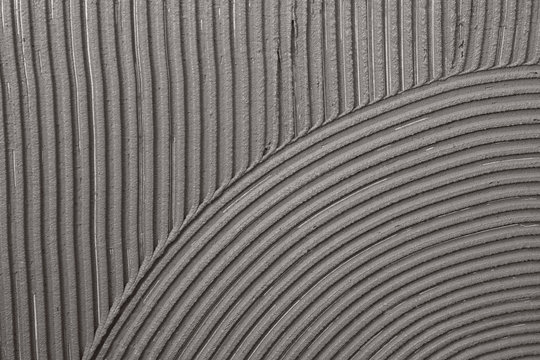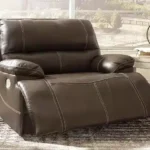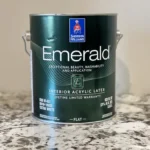Tile adhesive as filler takes two or three days for the typical wall filler materials to dry. If you need to improve your home’s tiling quickly, this will take much time.
Because tile adhesive dries in just 24 hours, you might be wondering if it’s a smart idea to use it to patch up any holes or cracks in the walls. In addition, certain adhesives can be tiled over in as little as three to four hours.
Table of Contents
Can Tile Adhesive be Used as Filler?
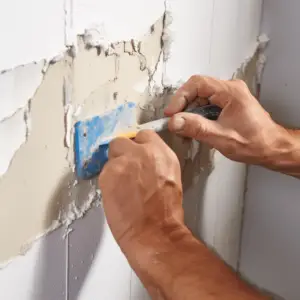
Yes. Tile adhesives can be used as fillers if you are in a rush and don’t have time to use regular fillers because they take a long time to dry. The tile adhesive dries rapidly and works well for filling the holes and cracks.
Some tile adhesives can be covered with tiles in as little as three to four hours. For example, rapid set adhesives often require up to 24 hours to dry but can be tiled over in about 3 to 4 hours.
How to Fill Cracks and Holes Using Tile Adhesives
Clear Any Loose Paint
Tile adhesive as filler the holes were caused by nails that you pulled out, the removal of the nail might remove some paint or cause the paint to become loosened. As a result, you should remove any nearby loose paint before filling the hole.
The 150 grit sandpaper would be a fantastic choice for removing the flaky paint. Before filling the hole, use sandpaper to smooth the surrounding area. If there is no loose paint to be removed and the surrounding area is fine, you can skip this step.
Apply the Tile Adhesive
Apply a layer of tile adhesive to the hole or crack. The layer can be applied with a spackle knife. To fill the hole or crack with adhesive, move the knife over it while holding it at a 45-degree angle to the wall.
Allow the Adhesive to Cure
Adhesives often take roughly 24 hours to dry. The rapid set adhesive, however, can be tiled over after three to four hours.
Letting the adhesive dry entirely if you have time would be preferable.
Scrape Away Any Extra Adhesive
After applying the adhesive, you must remove any extra adhesive surrounding the hole or crack. You can use the spackle knife to scrape off the extra layer of the adhesive by dragging it slowly over the wall.
Sand the Area
With sandpaper, smooth the region surrounding the hole or crack. Once again, you can smooth off the area with 150 grit sandpaper.
Tile or Paint
You can now begin laying your tiles if you are tiling the area. Additionally, if the adhesive is only used to fill the hole or crack, you can now paint over the adhesive.
Is Tile Adhesive More Effective at Repairing Holes and Cracks Than Joint Compound?
Yes. The adhesive may work better for filling holes than the joint compound. This is particularly true if the crack or hole is located in an area frequently exposed to water since the joint compound may become soaked and softer, which will cause it to collapse.
Since it doesn’t become saturated with water after drying, the tile adhesive doesn’t have this issue.
Can Grout be Used to Fill up Cracks?
Grout is a fantastic crack-filling material. When you fill a crack with grout, you will repair it and will be able to see any subsequent repairs.
Grout, however, should only be used in tiny cracks. These cracks are commonly known as hairline cracks. The ideal crack width is three to four millimeters. You should choose another appropriate filler instead if the cracks are more prominent than this.
What to Use Before Tiling as a Filler in Holes
For wall holes, there are many fillers. Each filler works best for particular purposes. The fillers you can use before tilling are listed below.
Ready-Mixed Filler
The ready-mixed filler has an easy application and can be used for various tasks. They can be utilized in holes of various widths and depths. They can fit into spaces up to 20 millimeters deep.
Additionally, as their name implies, these fillers are already mixed, so you don’t need to remix them.
Powder Filler
Tile adhesive as filler, One of the least expensive fillers available on the market is this. It works better for larger cracks and holes.
Since the powder is so simple to mix, you can do it yourself. The powder filler is utilized both indoors and outdoors due to its flexibility.
Flexible Filler
Because they permit the material to move, these fillers are appropriate for usage with brick, wood, and stones. The sole drawback is that, despite having a long lifespan, they cannot be utilized to fill shallow holes and cracks.
Exterior Fillers
The fillers are more suited for outdoor repair since they can withstand various weather conditions and water. It would be best if you only used them for exterior repairs because they are not flexible or adaptable enough to be used as indoor fillers.
Foam
Once applied to the hole, the foam fillers expand and fit snugly. They are more suited for deep yet small holes or cracks than standard fillers.
Other Fillers
Other filler types include rapid drying, acrylic, and fine fillers.
How to Fill the Deep Holes in a Wall
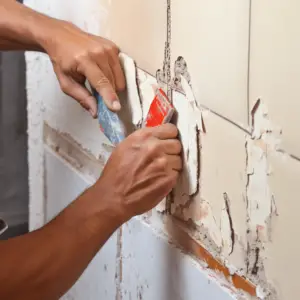
You will need powerful fillers to repair large holes in a wall. Deep holes cannot be filled with hairline fillers because they might worsen the situation. Here are some instructions for fixing large holes in a wall.
- Clean the hole first by removing any dirt or debris, then remove any loose paint or other materials that may be inside or surrounding the hole. The scraper’s edge can be used to clean the hole.
- Fill the hole with a deep filler using any tool with a flat edge. The filler should be used in excess to fill the gap adequately.
- After you’ve filled the hole, use the tool’s edge to level the hole’s surface with the surrounding area. Moreover, use the tool edge to scrape out any excess filler from the area around the hole.
- Deep fillers often dry in one to two hours. Look at their instructions to find out how long it takes for the fillers to dry.
- If the hole is more than 50 millimeters, you must fill it in layers; however, each layer must cure completely before the next one is applied.
Conclusion
In conclusion, if you are in a rush and don’t have time to apply standard fillers since they take a long time to dry, you can use adhesives as fillers. For holes and cracks, tile adhesives work well and dry rapidly.
